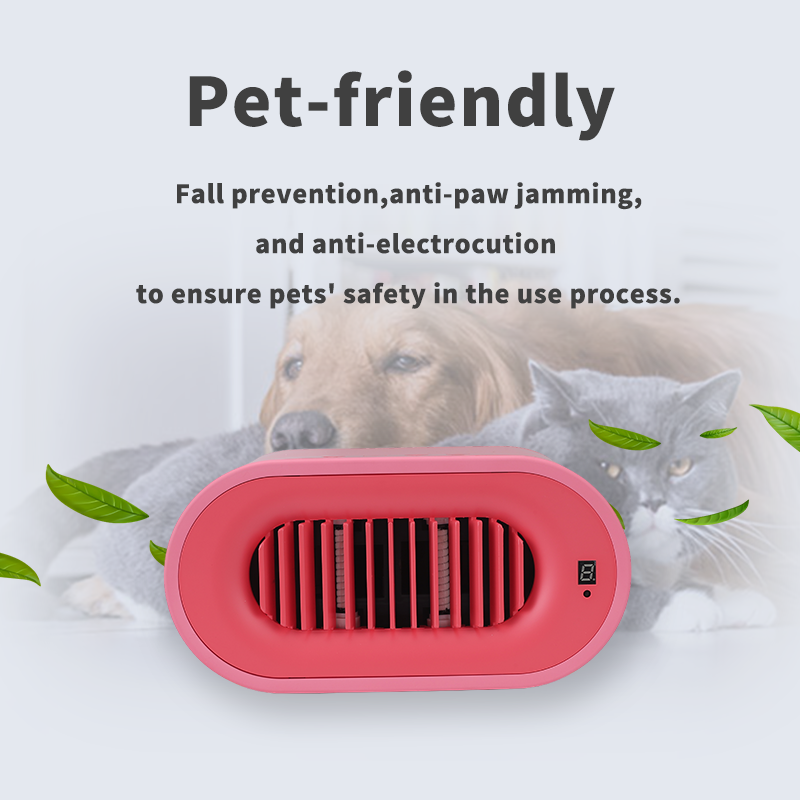- This topic is empty.
-
AuthorPosts
-
16/09/2025 at 10:13 #4625
Indoor air pollution is an often-overlooked concern, and among its many threats, formaldehyde stands out as one of the most harmful. Found in building materials, furniture adhesives, and household products, formaldehyde can accumulate in closed environments and lead to long-term health risks. A formaldehyde removal plasma air purifier is designed to tackle this invisible pollutant by using plasma technology to break down harmful molecules instead of merely trapping them. Unlike traditional purifiers, these systems focus on neutralization, making them a key player in ensuring safer breathing spaces. In this blog post, as professional indoor air purifier with plasma exporter, RUIAIR will share the important role of formaldehyde removal plasma air purifier in sustainable living.
How Plasma Technology Enhances Formaldehyde Removal?
The uniqueness of a plasma-based formaldehyde air purifier lies in its core working principle. Plasma generates highly reactive ions and free radicals that actively decompose complex pollutants such as volatile organic compounds (VOCs). When formaldehyde molecules encounter this environment, they undergo a chemical breakdown into less harmful substances, typically carbon dioxide and water vapor. This process is not only more efficient than filtration alone but also reduces the risk of re-release, which can happen with filters saturated with chemicals.
Why Indoor Spaces Need Formaldehyde Removal Plasma Air Purifiers?
Homes, offices, and public facilities all carry sources of formaldehyde. Newly renovated buildings, for example, often show elevated concentrations because of flooring, paints, and sealants. In offices, pressed-wood furniture or wall panels contribute to lingering emissions. A plasma air purifier for formaldehyde control addresses these hidden hazards where ventilation is insufficient. By continuously neutralizing pollutants, it helps maintain air quality standards recommended by health authorities, making it suitable for both residential comfort and occupational safety.
Beyond Filtration: Distinct Role of Plasma in Air Purification
While HEPA filters are excellent for capturing dust and allergens, they are not designed for chemical pollutants. Activated carbon filters can adsorb formaldehyde, but they become saturated over time, requiring frequent replacement. A formaldehyde plasma purifier takes a different route by initiating a molecular reaction that changes the pollutant’s structure entirely. This distinction means that instead of merely holding the pollutant in place, plasma technology ensures degradation, offering a continuous solution rather than a temporary fix.

Applications of Formaldehyde Removal Plasma Air Purifiers in Living
The use of plasma air purifiers for formaldehyde removal extends across multiple environments:
-
Residential settings: Protecting families from chemical exposure in new homes or renovated apartments.
-
Healthcare facilities: Reducing VOC buildup in waiting rooms, clinics, and laboratories where sterilization chemicals are often used.
-
Educational institutions: Safeguarding children and staff in schools or daycare centers built with modern construction materials.
-
Commercial spaces: Enhancing air quality in offices, hotels, and retail stores where interior finishes can emit VOCs continuously.
These diverse applications highlight how a single solution addresses a universal need for healthier air.
Comparing Plasma Air Purifiers with Traditional Solutions
When examining the broader air purifier market, formaldehyde removal plasma devices stand apart for their efficiency. Unlike ionizers that may produce ozone as a byproduct, modern plasma purifiers are engineered to minimize harmful emissions while maximizing pollutant breakdown. Compared with activated carbon units, plasma purifiers require less frequent maintenance and remain effective over longer periods. This makes them a logical choice for environments where consistent air safety is a top priority.
Research and Development in Plasma Air Purification
The science behind formaldehyde-targeted plasma air purifiers continues to evolve. Researchers are exploring hybrid designs that combine plasma with catalysts or advanced filters to further boost efficiency. For instance, photocatalysts paired with plasma can accelerate the breakdown of formaldehyde molecules, ensuring complete mineralization. These innovations not only improve performance but also broaden the range of pollutants that can be effectively managed.
Addressing Concerns about Plasma Air Purifiers
As with any advanced technology, questions arise regarding safety and effectiveness. Critics often point to ozone generation as a potential risk. However, modern plasma air purifiers for formaldehyde removal are carefully designed to stay within safe ozone limits set by environmental standards. Furthermore, their continuous monitoring functions ensure that air purification is both effective and safe for long-term use. Consumers considering such devices should look for certifications that confirm compliance with international safety regulations.
Role of Formaldehyde Removal Plasma Purifiers in Sustainable Living
Sustainability is not only about reducing visible waste but also about managing invisible threats. A formaldehyde removal plasma air purifier aligns with sustainable practices by reducing dependency on disposable filters and lowering long-term energy use through efficient purification cycles. Additionally, by preventing long-term health issues associated with chemical exposure, these devices contribute indirectly to reducing medical costs and improving overall well-being.
Future Trends in Plasma-Based Formaldehyde Purification
The market for formaldehyde plasma air purification systems is poised to grow alongside global concerns about indoor air quality. As urbanization accelerates and people spend more time indoors, demand for solutions that go beyond particle filtration will increase. Future devices may integrate smart sensors, AI-driven air quality monitoring, and adaptive purification modes to optimize performance. These advancements will not only make air purifiers more user-friendly but also more effective in diverse environments.
Conclusion
Formaldehyde remains a persistent indoor pollutant that cannot be ignored. A formaldehyde removal plasma air purifier offers a modern, scientifically grounded approach to eliminating this chemical hazard. By breaking down pollutants at the molecular level, plasma technology provides a level of protection that traditional filters cannot match. As living standards rise and awareness of indoor air quality grows, these advanced purifiers are set to become an essential part of healthier homes, workplaces, and public spaces.
http://www.sh-ruiair.com
RUIAIR -
-
AuthorPosts
- You must be logged in to reply to this topic.